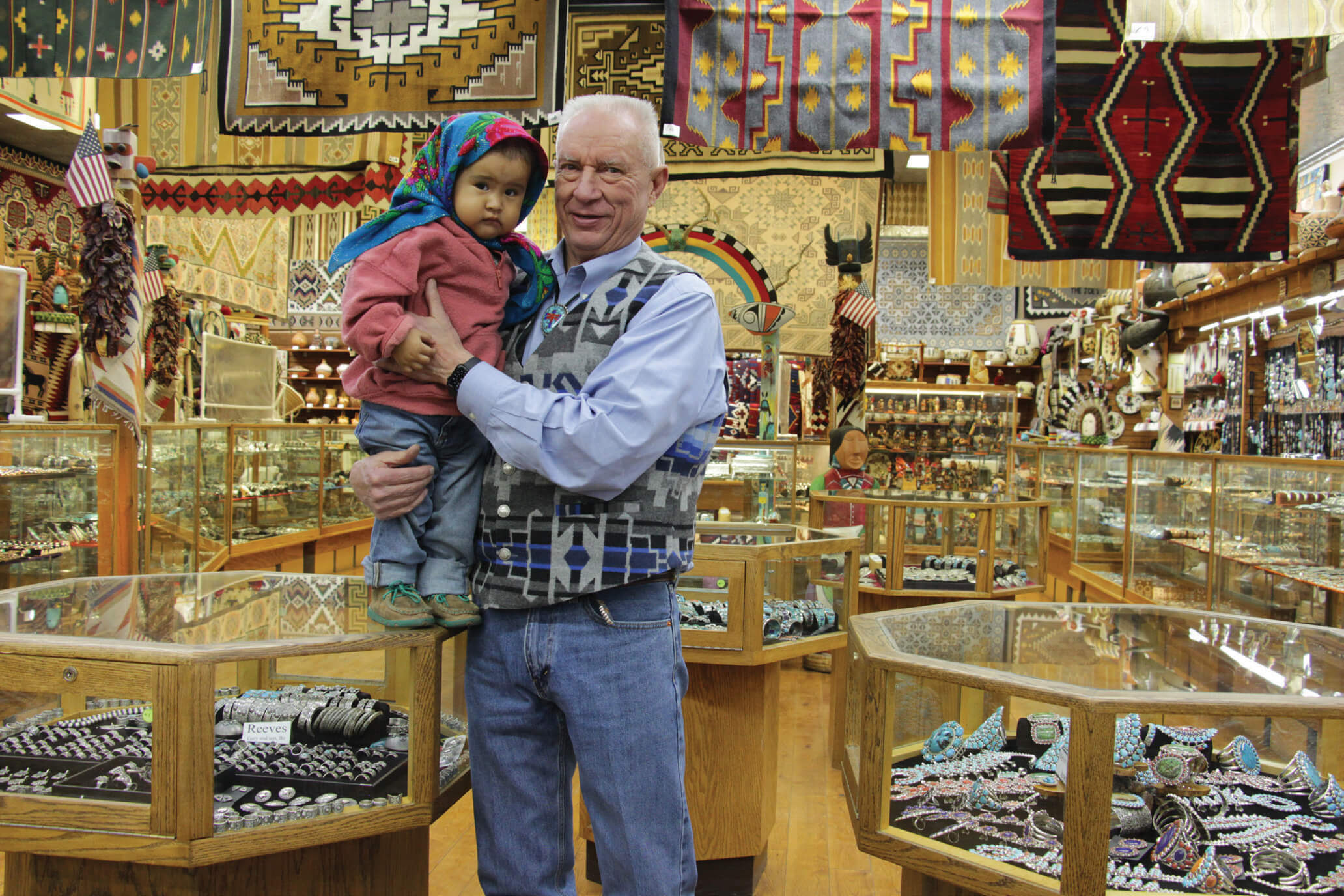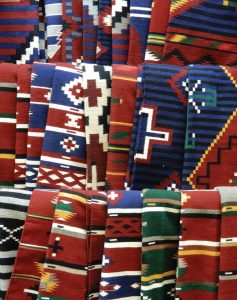
15 Mar Collector’s Eye: An Authority on Authenticity
For more than 50 years, Perry Null has been trading artwork and jewelry with American Indians from different tribal nations. He began learning the business in 1970 when he started buying and selling jewelry from Navajo, Zuni, Hopi, and other Indigenous silversmiths.
He worked along the famous Route 66 in Gallup, New Mexico, where people from the nearby reservations could come to his store to sell their jewelry and hand-woven rugs. In turn, he sold authentic Native American work to travelers and visitors to the area.

Perry Null Trading in Gallup, New Mexico, is known for its wide variety of hand-woven Navajo (Diné) rugs. The intricate designs, expert craftsmanship, and bold colors make them a collector’s favorite.
When I-40 was constructed in 1980, diverting the majority of traffic away from Gallup’s downtown, Null and others in the trading post business thought it would end their professions. Instead, the fate of the trading post business survived and thrived. “I think buyers appreciate being able to get away from the trucks on the interstate and come into town. It’s easier now for them to get around,” says Null.
Null works with Native American artists who bring their creations to him, which he buys outright and resells. Gallup is located near the Zuni Pueblo, Hopi Nation, and Navajo Nation. His business credo is an old-fashioned one that early vendors at trading posts learned best served them: Buy at a fair price so you can sell at a fair price.
“Being a trader, that’s what you do,” Null says. “It has to work both ways. We all depend on each other, and that’s our standard.”
Perry Null Trading Post began in 1939 as Tobe Turpen’s Trading Post. Null purchased the building and changed its name in 2002. It operates as a family business, with his son and son-in-law working full-time with him, and other family members stepping up to work during busy times.
WA&A: Was there ever a piece that got away?
Perry Null: Around 1994, C.G. Wallace, a Zuni trader, came to town. He was in a motel room, and I went there and bought some pieces from him that were all laid out on a bed. Alongside the jewelry was a giant piece of Number Eight turquoise [from the legendary Nevada mine], the size of a coke bottle, a polished specimen. After completing my other transactions, I dared to ask him what he wanted for it. He said, “$12,000 and not a penny less.” I knew it was rare; he’d likely bought it in the 1950s, and there wasn’t another one like it in the world. I offered him $10,000, which he refused. I dared to believe that he’d call me later in the day and take me up on my offer, but he never did.
WA&A: Is there an artist you discovered who has gone on to experience notoriety?
P.N.: I couldn’t say that I ever “discovered” an artist. I’ve had the privilege to work with many who have reached fame and success. One that I had the privilege to buy from when he was in college is Vernon Haskie, who makes beautiful things. He’s won many blue ribbons and best of show awards. I’m privileged to still buy a few things from him. Another artist is Raymond Yazzie, who I first bought from 30 or 40 years ago. Today, his bracelets sell for $100,000 or more.
WA&A: If you were having a dinner party and wished to have lively conversations about art, which artists would you invite?
P.N.: If I could, I would invite all of the silversmiths and artists who have passed. I’ve been blessed to have had the opportunity to know them and buy their art. They all had this in common: they were truly talented, and they were good people.
WA&A: Where will your collection be in 100 years?
P.N.: I’d like to see it around someone’s neck or in their home. I hope someone will own it and appreciate the people who made it. And that they will appreciate what it took to make it, and know they’ll never see a piece exactly like it again.






No Comments